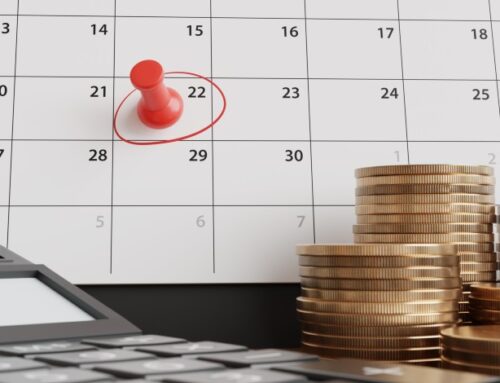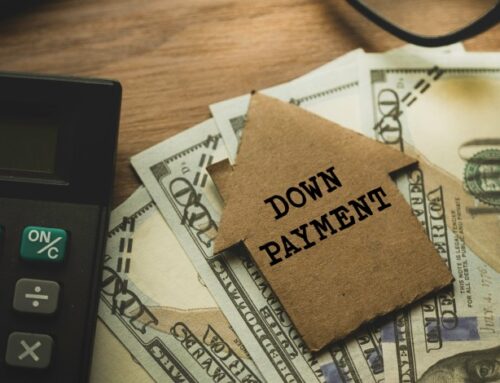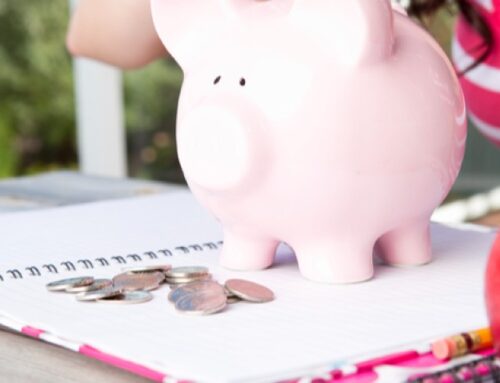It’s always been said there are two guarantees in life—death and taxes.
While people can argue over the number of certainties we receive over a lifetime, we can all agree that unforeseen emergencies happen to everyone. Preparing for such events can make a substantial difference during these stressful times.
Unfortunately, many Americans don’t have sufficient funds to handle life’s curveballs properly. A 2020 report on the economic well-being of U.S. households published by the Federal Reserve found that 36% of Americans didn’t have enough money to cover a $400 emergency.
Even if you’re one of the millions of Americans that live paycheck to paycheck, it’s still possible to stow money away for those unforeseen circumstances. Keep reading to discover how to stay ahead of unexpected expenses by building an emergency fund.
What Is An Emergency Fund?
An emergency fund or a rainy-day fund is a personal budget where you set money aside to cover large, unexpected expenses. Some of the top emergency expenses people face include:
- Unforeseen medical or dental expenses
- Major car repairs
- Sudden job loss
- Unplanned travel expenses
- Home-appliance repair or replacement
So, you may be wondering, when should I use my emergency fund? The definition of emergency expenses may vary for person-to-person, but generally, frivolous items should not be a reason to dip into your emergency fund. You should ask yourself the following three questions before you consider tapping into your emergency fund.
- Is it necessary?
- Is it unexpected?
- Is it urgent?
If you answered yes to at least 66% of the questions, the situation might be deemed necessary to use the funds stowed away for emergencies.
Why do you need an emergency fund?
Life tends to throw us curveballs at the most inopportune times. An emergency fund savings account gives you a financial cushion to stay afloat without the need to rely heavily on credit cards or high-interest loans. Emergency funds are especially important when you have debt. That is because it will allow you to avoid borrowing more money.
How Much Money Should Be In An Emergency Fund?
There is no one-size-fits-all approach to determining how much money you should keep in your emergency fund. Factors such as lifestyle, monthly expenses, income and dependents may vary depending on the person. However, a good rule of thumb is to have at least three to six months’ worth of expenses saved.
The three to six-month baseline will provide you with enough money in the unfortunate event of a sudden job loss. You’ll still be able to pay the bills and afford necessities while you search for a new one.
Furthermore, house stability should significantly determine how much to add to your emergency fund. For example, if you’re part of a two-income household with a stable income, three months of expenses should suffice. However, if you’re a one-income family, then six months should be enough to keep you afloat.
While three to six months’ worth of expenses can seem like a difficult task, we recommend starting small and building your way up to that amount.
How To Build An Emergency Fund
Now that you understand the importance of an emergency fund and how much you should save, let’s delve into how to create an emergency fund.
Create a budget that works for you
Before you can start putting money into an emergency fund, you first need to know where your money is going. A budget allows you to track your monthly income and expenses. There are various techniques you can use. Some of the most popular budgeting approaches include:
The key is to find a tactic that works for you and your financial situation. Once you’ve found a budgeting system tailored to your specific needs, you can start setting savings goals.
Set a monthly savings goal
Depending on the budgeting method you prefer, money may already be allocated to an emergency fund. However, if the system doesn’t account for emergency savings, you’ll want to factor that into your savings goals as well.
It may be challenging to save money based on your current financial situation. Some people elect to automatically transfer money into their savings account each time they get paid. If you have chosen to get paid via direct deposit from your employer, you can divide your paycheck between a checking account and a savings account. This way, you’re saving money without touching the checking account.
By establishing a monthly savings goal, you’ll get in the habit of saving regularly, and it will make hitting that three to six months’ worth of expenses a lot easier.
Save your tax refund
According to the most recent data from the IRS, the average tax refund in 2021 totaled $2,873. If you expect to receive a return, tossing all or most of it into your savings account can be a great way to boost your emergency fund.
When it comes time to file taxes, consider having the refund deposited directly to your emergency fund savings account.
Conversely, you can adjust your W-4 tax form to have less money withheld from each paycheck. You can add the extra money to your emergency fund. However, the downside is that you’ll most likely not receive a tax refund. Analyze your financial situation and make a decision that works best for you.
Assess and adjust how much you save
After you’ve been contributing toward your emergency fund for a few months, it may be helpful to review your savings goals and adjust if needed. This can be especially true if you have recently dipped into the emergency fund.
On the other hand, if you have at least three to six months’ worth of expenses already saved in your emergency fund, you may want to consider putting the extra cash into another savings fund.
Where Should You Put Your Emergency Fund?
Emergency funds should be kept in a spot where you can quickly access the money if the situation is deemed an emergency. Some of the best options may include:
- High-interest rate savings account: Since an emergency can happen at any time, it is important to have quick and easy access to your money. However, this account should be separate from the bank account you use daily, so you can avoid the temptation to dip into the emergency fund.
- High-yield savings account: The type of savings account is ideal for an emergency fund because the funds are federally insured for up to $250,000 per depositor. A high-yield savings account is a safe and easy way to access your funds in the event of an emergency.
Learn More About Effective Money Management
Establishing an emergency fund can help you avoid financial distress in a time of need. Using the tips mentioned in the article can help you create an emergency fund that may help in a time of need.
Do you want to learn more about saving money, budgeting and paying off debt efficiently? Check out some of our recent blog posts where we delve into various aspects of money management.
- How to Pay off Debt: Best Strategies to Live Debt-Free: It may seem overwhelming when debt starts accumulating. This article provides the best debt payoff strategies to get you on the path to living debt-free.
- Budgeting 101: How to Use the 50/30/20 Rule: The 50/30/20 rule is one of the most popular budgeting methods. In this article, we discuss how you can implement it into your financial planning.
- 7 Budgeting Apps to Help You Manage Your Money: Budgeting is an important factor in achieving financial freedom. Discover the seven best budgeting apps available on the market.
- How to Prepare Financially for Retirement: Building up to be financially stable in retirement takes decades to achieve. Discover some of the best strategies to implement into your retirement plan.




